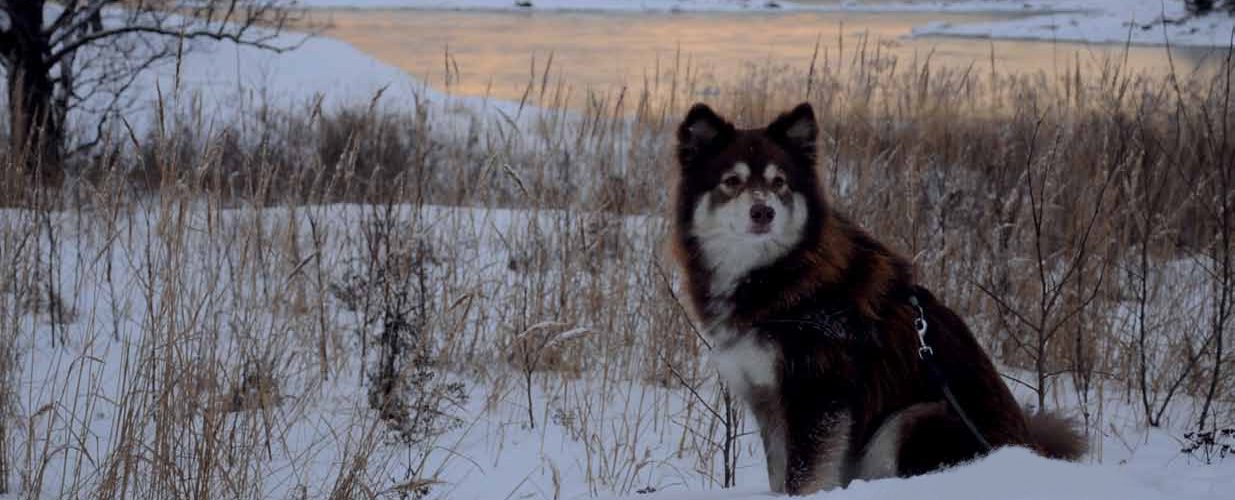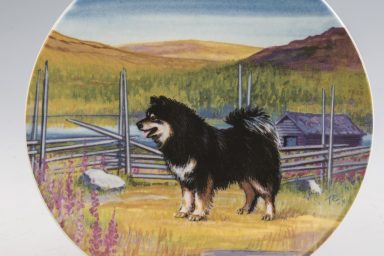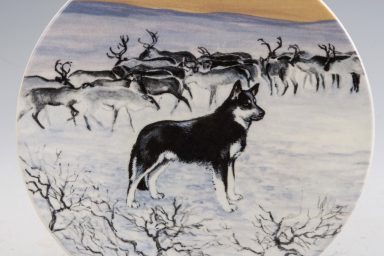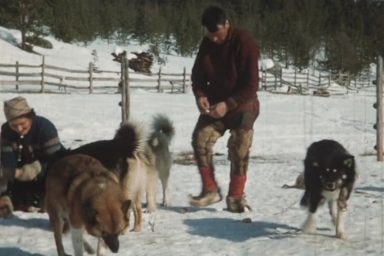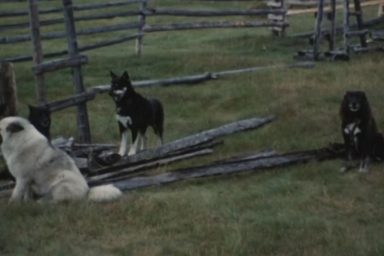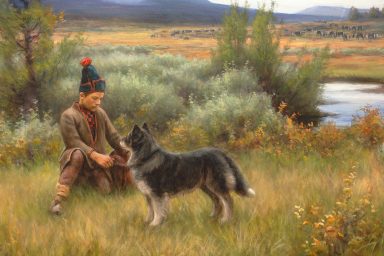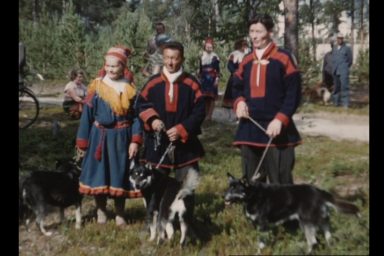The ancestors of the present-day Lappish dogs helped the northern people as they hunted, for example, wild reindeer, already 10,000 years ago, perhaps even earlier. In the north, dogs were used as herders of domestic animals, as tenacious draught animals, and as courageous guards to keep wild animals away from the homestead. The dogs, which were energetic, adaptable, and content with what little they had, were a lifeline in the demanding terrain and weather conditions.
Ancestors of the Lapponian Herder helped hunters
The oldest evidence of Lappish dog breeds has been dated in the Mesolithic period around 10,000 years ago. In that era, dogs were used for hunting wild reindeer and other wild game. The Sámi people inhabited a much broader area back then, and Sámi cultures are known to have existed as far south as near Lake Ladoga in Karelia.
Stepping 5000 years forward to the Bronze Age, there are signs of the development of agriculture in Finland. The Ice Age began to give way, and the Finnic people followed the withdrawing ice cap northward. They spread out to new areas, and new languages and sources of livelihood were born. The hunting culture was first displaced by agriculture in the west, near Oulu and Pello. People started farming and living in permanent abodes. They needed dogs to guard their domestic animals, homes, and grain stores.
While the Finnish settlers spread north and began farming, the Sámi still lived on wild reindeer hunting. Dogs were a big help. The Sámi rarely settled in one place, so their dwellings were temporary and light. It is likely that already at that time they tamed some reindeer for home use as, for example, strong draught animals.
Dogs were used to guard those reindeer and to help transport possessions and people.
Around the year 500, the Sámi hunting culture was influenced more and more by farming and trading. People travelled around more extensive areas, traded, and found new forms of livelihood They started hunting wild reindeer, not only for meat, but also for their fur. Dogs travelled freely along with humans and led a semi-wild life as village dogs.
An era significant for Lappish dogs was around the year 700, during the late Iron Age. At that time, Finns had already settled in Kainuu and Northern Ostrobothnia, and the Sámi who had previously inhabited those areas either withdrew or were assimilated with the newcomers. The Sámi who decided to leave travelled north and spread to their present-day living regions in Northern Scandinavia. Their dogs came into contact with those of the peoples around them.
Many nationalities lived in the north in those days, and people didn’t care about national borders the same way they do nowadays. The Sámi in different lands kept in contact with each other and with neighbouring peoples such as the Vikings. Domestic animals and dogs mixed freely between them. It is possible that present-day Lappish dogs have received influence from both eastern hunting and herding dogs, such as Laikas, and the Vikings’ sheepdogs.
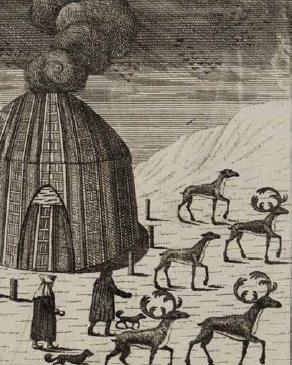
Reindeer husbandry developed side by side with hunting culture
After the Middle Ages, the church and state both developed a keen interest in the exotic, northern areas. Literary evidence of the Sámi culture can be found from the 16th century. The first references to reindeer herding and Lappish dogs can be found in Olaus Magnus’ book Pohjoisten kansojen historia (History of the Northern Peoples, 1555).
The Sámi hunting culture did not end abruptly. It lived on side by side with reindeer herding, giving the Sámi people their livelihood. More and more wild reindeer were tamed and used for pulling sleighs, carrying burdens, and as decoys in hunting wild forest reindeer. At the same time, dogs were needed for increasingly diverse tasks.
Reindeer husbandry probably developed first in Sweden and Norway before it spread to Finland. People had close interaction with people in neighbouring lands, and the likely spark for reindeer herding was probably in Norwegian sheep herding and the Finnish settlers’ cattle breeding.
In the 1600s, the Sámi hunting culture and the Finnish cattle breeding culture had already merged in many ways. The Sámi led a half-nomadic life, living from hunting and fishing, but they also kept domestic animals, which were herded by dogs. More permanent habitats meant that Lappish dogs were also needed to guard homes and food stores.
Court records from the 1600s state that the obligation to keep dogs on leashes did not apply to reindeer dogs. This clearly means that Lapponian Herders were the reindeer keepers’ fellow workers and enjoyed special status.
Lapponian Herders differed from the other village dogs by colour, too: they were black. The colour was significant in another way, too: a black dog was easily distinguished from wild predators such as wolves, which were light grey.
Reindeer husbandry grew in importance as a source of livelihood for many reasons, including the decrease in numbers of wild forest reindeer because of overhunting. There was a high demand for reindeer skin products, and in addition to the Sámi, the Finnish settlers also hunted wild reindeer. Reindeer were also an important source of meat. In the cold conditions of the northern areas, meat was an important source of nourishment, and its availability was secured by domesticating the wild reindeer. At the same time, people began to protect reindeer with fences and herding dogs.
Source: Dogs of Lapland – Cheerfully present (2012), Lappalaiskoirat ry, Kirjakaari, Jyväskylä.
